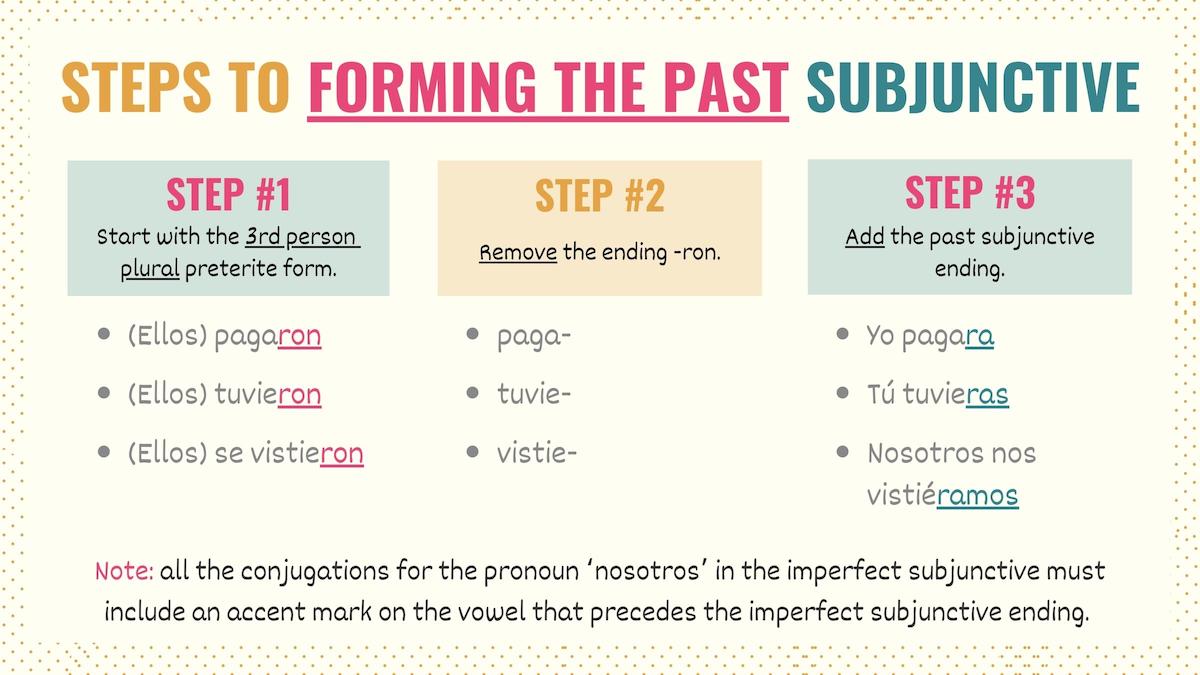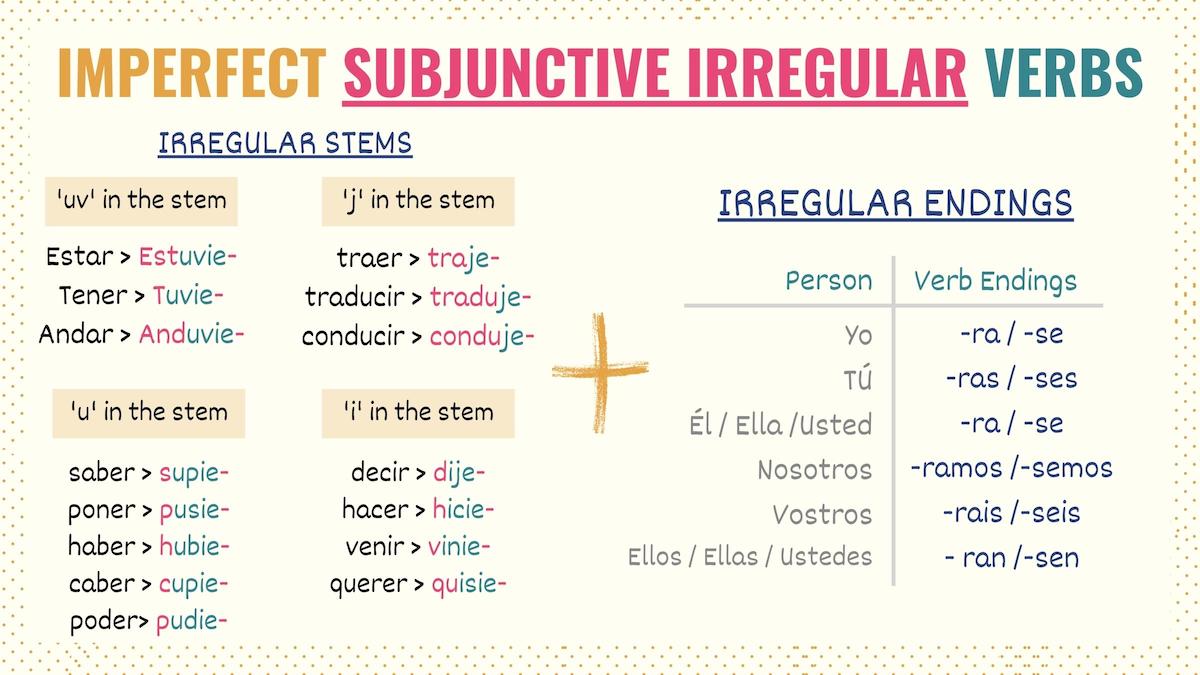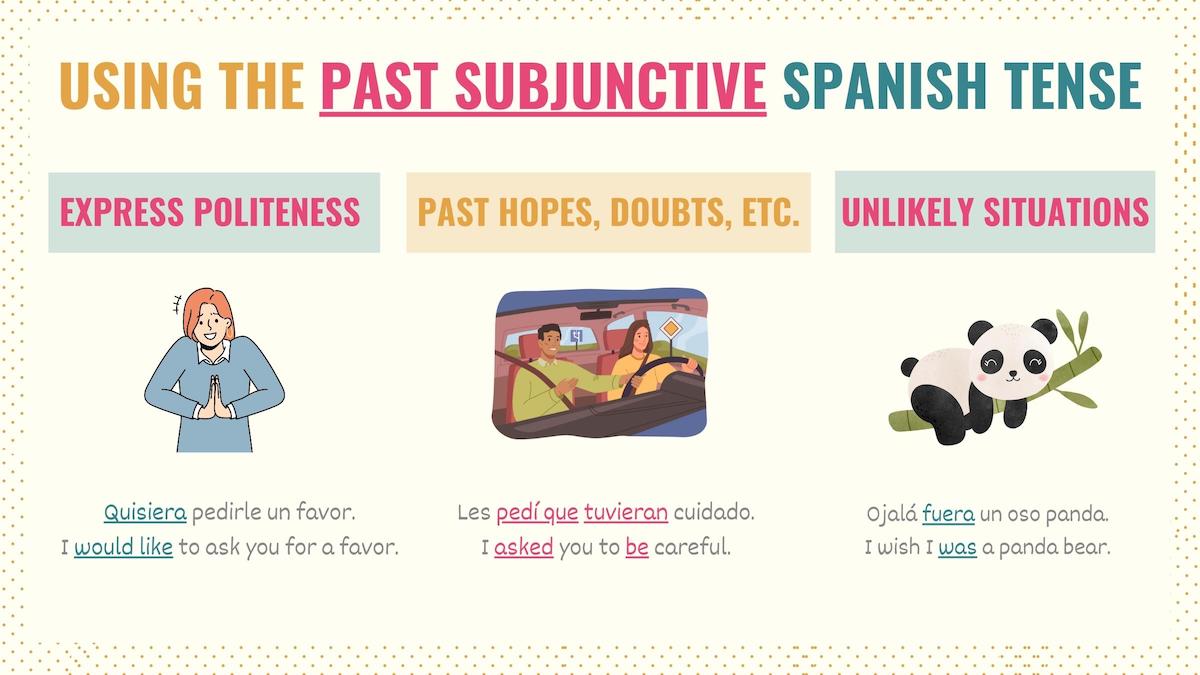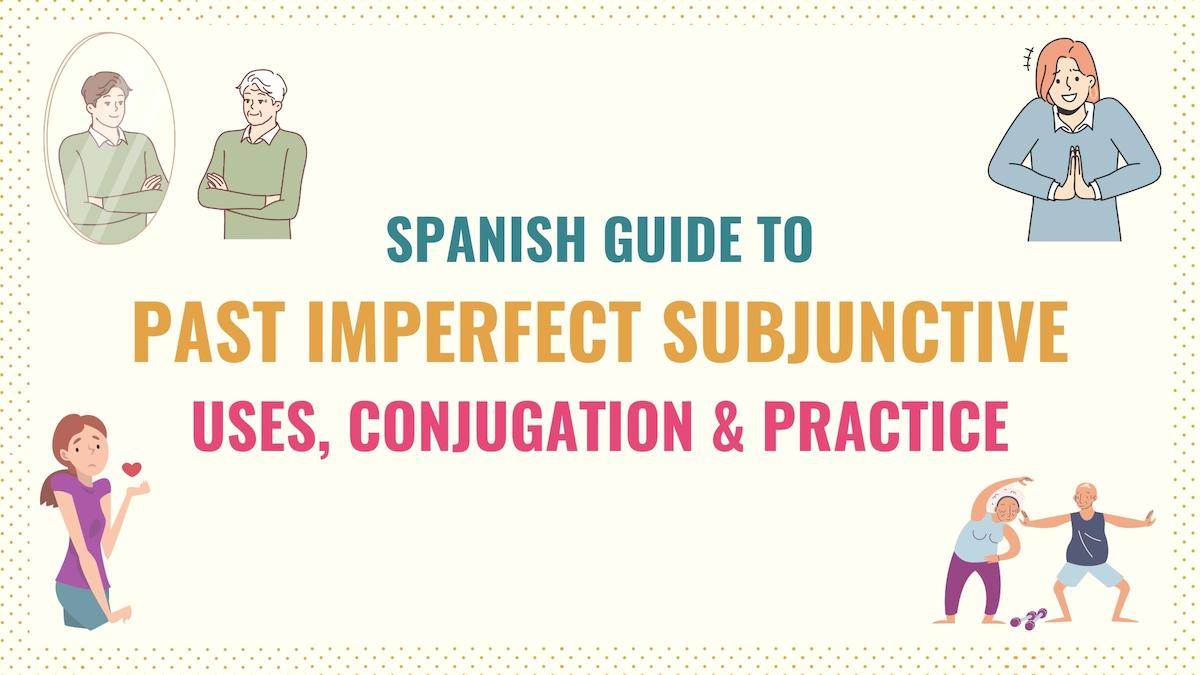Talking about wishes we had or dreaming about what we’d do if our circumstances were different is something many, if not all of us, do. These are some of the things the imperfect subjunctive Spanish tense allows you to convey.
In this guide, you’ll find all the key information to form and use this subjunctive tense. Here is an overview of what we’ll cover:
- How to Conjugate the Spanish Imperfect Subjunctive
- When to use the Past Subjunctive
- Key Points
- What to Do Next?
The past subjunctive may seem intimidating. But, as you’re about to see, you will leverage some Spanish topics you already know. So, let’s get started!
Take Note: Just like you study the present indicative before learning any of the past tenses in Spanish, you must have a good understanding of the present subjunctive before diving into the Spanish imperfect subjunctive tense.
How to Form the Spanish Imperfect Subjunctive
The conjugations of the imperfect subjunctive, also known as the Spanish past subjunctive, are derived from the third-person plural preterite forms (ellos, ellas, ustedes).
These are steps to conjugate the imperfect subjunctive in Spanish:
- Take the third-person plural preterite form of the verb you want to conjugate.
- Remove the ending ‘-ron’.
- Add the appropriate past subjunctive ending.
Since the imperfect subjunctive is derived from the 3rd person plural preterite form, any irregularities or stem changes in the Spanish preterite tense will also exist in the past subjunctive conjugation. Simply put, an irregular or stem-changing verb in the past preterite will maintain the same irregularities and stem changes in the Spanish imperfect subjunctive.
Here is a conjugation chart with the imperfect subjunctive endings, which are used for all verbs:
| Person | Past subjunctive endings |
|---|---|
| Yo | -ra /-se |
| Tú | -ras /-ses |
| Él / Ella Usted | -ra /-se |
| Nosotros | -ramos /-semos |
| Vosotros | -rais /-seis |
| Ellos / Ellas Ustedes | – ran /-sen |
The Spanish past subjunctive has two endings (-ra and -se). Although they’re interchangeable, -ra endings are used in Latin American Spanish, whereas –se endings are more common in Spain (Castilian).
Additionally, all the conjugations for the pronoun ‘nosotros’ in the imperfect subjunctive must include an accent mark on the vowel that precedes the imperfect subjunctive ending.
Now that you understand the theory, let’s put it into practice. Take the verbs pagar, tener and vestirse as examples:
| #1 Start with the 3rd person plural preterite form | #2 Remove -ron | #3 Add the past subjunctive ending |
|---|---|---|
| (Ellos) pagaron | paga | Yo pagara |
| (Ellos) tuvieron | tuvie | Tú tuvieras |
| (Ellos) se vistieron | vistie | Nosotros nos vistiéramos |
Take Note: Don’t forget to choose the appropriate reflexive pronoun when working with reflexive verbs. Remember that these rules are also applied to all Spanish pronominal verbs.

Imperfect subjunctive irregular verbs
As mentioned above, the conjugation of the imperfect subjunctive in Spanish is heavily based on the pretérito. Therefore, the irregular verbs in the past subjunctive are the same irregular verbs found in the past preterite.
Here is a quick reminder of these verbs:

Remember, you must replace the past indicative ending with the past subjunctive ending.
Check these sentences:
Te pedí que fueras a la tienda.
I asked you to go to the store.
No quisiéramos molestarla.
We don’t want to bother you.
Si tuviera más tiempo, aprendería a cocinar.
If I had more time, I would learn to cook.
When to Use the Imperfect Subjunctive Spanish Tense
In Spanish, the imperfect subjunctive tense is used to:
- Make polite requests
- Refer to past advice, wishes, doubts, and demands
- Talk about situations unlikely to happen in the present
Let’s check each one of these applications.

Express politeness
The Spanish past subjunctive is often used to politely and formally request something. In this context, the verbs querer and poder are frequently used.
Quisiera pedirle un favor.
I would like to ask you for a favor.
Ben, ¿quisieras ir conmigo al baile?
Ben, would you like to go to the ball with me?
¿Pudieran quedarse quietos un momento?
Could you stay still for a minute?
Take Note: The conditional simple can also be used to express politeness in Spanish. In this context, both the past subjunctive and conditional are translated into English as ‘would’.
Talk about past demands, hopes, doubts, and advice
The Spanish past subjunctive allows you to express past wishes, emotions, requests, suggestions, and uncertainty you had about something. Here are some sentences:
[Verb in past] + que + [past subjunctive]
No creía que fueras a venir.
I didn’t think you were going to come.
Les pedí que tuvieran cuidado.
I asked you to be careful.
No sabía que hablaras dos idiomas.
I didn’t know you spoke two languages.
Tim y Luke esperaban que pudiéramos ayudarlos.
Tim and Luke hoped that we could help them.
Notice that verbs that express wishes, doubts, and emotions (subjunctive triggers) are conjugated in a past indicative tense, either the preterite or imperfect. The reason for this is that the trigger refers to a previous action or moment in time, and the subjunctive mood reflects that by using its past form.
Take Note: As a quick reminder, subjunctive triggers are phrases and verbs that express hope, uncertainty, requests, and feelings. Examples of these triggers are esperar que, pedir que, ojalá, no creer que, decir que, etc.
Express conditions and situations unlikely to happen
The imperfect subjunctive in Spanish is combined with si clauses to express conditions and hypothetical results that are unlikely to happen in the present. Here is how you form this meaning:
Si + [imperfect subjunctive] + [conditional simple]
Si fueras un animal, ¿que serías?
If you were an animal, what would you be?
Todo sería diferente si pudiera hablar con ella.
Everything would be different if I could speak with her.
Si supiéramos la respuesta, no necesitaríamos tu ayuda.
If we knew the answer, we wouldn’t be asking for your help.
Like in English, in Spanish, the order of si clauses can be modified. Notice that all of these examples refer to things that are improbable. As a result, the past subjunctive form is closely related to fantasizing about how things would be.
Since some wishes have a remote possibility of happening, you can also use the past subjunctive to talk about them:
Ojalá no hiciera tanto color.
We wish it wasn’t so hot.
Quisiera ser millonaria.
I would like to be a millionaire.
Given that these wishes are not tied to a condition, you don’t need to use a si clause.
Key Points
As you’ve learned, the past subjunctive in Spanish is essential for more advanced and rich conversations. Here is a summary of this tense:
- The Spanish imperfect subjunctive conjugations use the stem from the third-person plural form of the preterite tense.
- To form this tense, you must replace the past indicative termination -ron with the corresponding imperfect subjunctive conjugation.
- Irregular verbs in the past preterite are also irregular in this subjunctive tense.
- In Spanish, the imperfect subjunctive tense refers to past doubts, wishes, advice, and suggestions someone had.
- It also expresses conditions and wishes that are unlikely to happen.
Spanish Past Subjunctive Additional Resources
To fully understand and master the past subjunctive in Spanish, you should know the preterite conjugations like the back of your hand. Also, knowing what the subjunctive mood is used for can help you better understand the applications of this past form.
Practice Quiz: Past Subjunctive
You can take our imperfect subjunctive Spanish practice quiz to test your understanding of this tense.
Download the Imperfect Subjunctive Spanish Guide PDF
Spanish tenses in the subjunctive mood are some of the most difficult for English speakers to learn and can take time to master. Download a free copy of the summarized PDF for this guide including the graphics, charts, uses and key points you need to get comfortable with the Spanish imperfect subjunctive tense.



